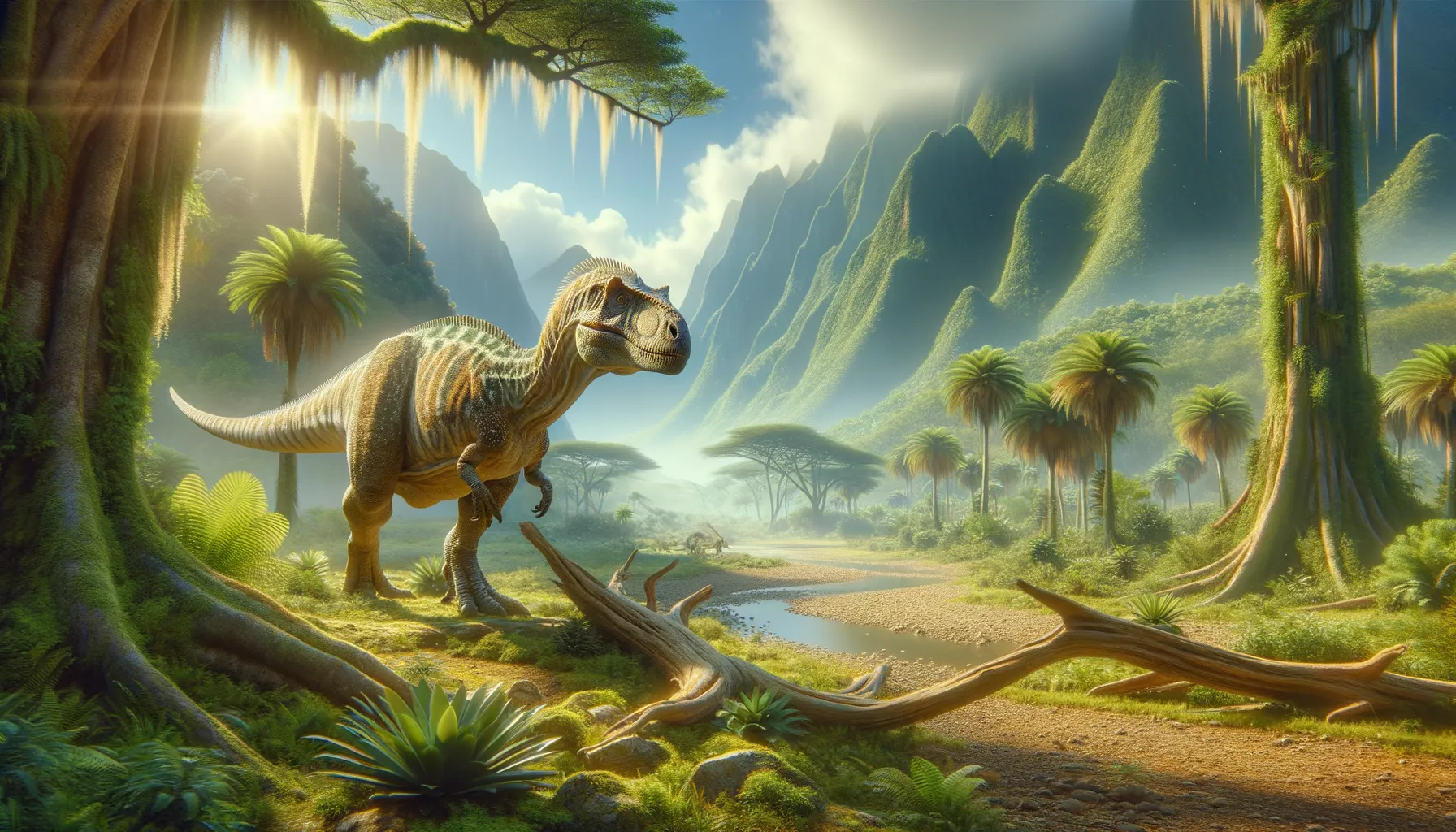
Eshanosaurus
The evolution revolution of the Jurassic.
Period
Jurassic
Length
Roughly 6 meters or 20 feet long.
Height
Around 1.5 meters or 5 feet tall.
Weight
Approximately 250 kg or 550 lbs.
Eshanosaurus is an intriguing theropod dinosaur, notable for being one of the oldest known members of the therizinosaurs. These dinosaurs are characterized by their unique body structure, mixing features of both plant-eaters and carnivores. Living during the early Jurassic period, Eshanosaurus is thought to have been a transitional species, showcasing evolutionary traits that highlight the diversity of dinosaurs during this era.
Diet
Eshanosaurus was likely omnivorous, meaning it consumed both plants and animals. Evidence suggests it had adaptations that allowed it to feed on a variety of food sources, making it versatile in its dietary habits.
Hunting
There is evidence to suggest that Eshanosaurus might have scavenged for small animals and insects. Instead of active hunting, it may have relied on available opportunities for picking at carrion or small prey.
Environmental challenges
Adaptation to its environment would have been one of its primary challenges, surviving in relatively dry regions. With climate fluctuations, Eshanosaurus needed to adapt to periods of resource scarcity. Another challenge would have been avoiding larger predators in its ecosystem, requiring it to rely on its ability to camouflage or hide.
Speed
Likely slow-moving due to its size.
Lifespan
Estimated to have lived around 20-30 years.
First discovery
Discovered in 2001 in Yunnan Province, China.
Fun Facts
- Eshanosaurus is one of the earliest known therizinosaurs, a group of unusual-looking herbivorous theropod dinosaurs.
- It lived during the early Jurassic period, around 190 million years ago, making it quite ancient compared to its therizinosaur relatives.
- Eshanosaurus fossils were discovered in China, in the Yunnan Province, which has been a rich site for Jurassic dinosaur discoveries.
- This dinosaur is known only from a single jawbone fossil, which makes it a bit of a mystery to scientists.
- Despite its limited fossils, Eshanosaurus has helped bridge the gap in the understanding of therizinosaur evolution and their presence in the Jurassic period.
- Therizinosaurs like Eshanosaurus had long, clawed arms and a pot-bellied body, making them stand out among other theropods.
- Eshanosaurus showcases how diverse dinosaur evolution was, even in the early Jurassic, highlighting surprising adaptations.
Growth and Development
Eshanosaurus likely experienced rapid growth during its early life to reach a height where it could defend itself. As with other dinosaurs, it may have gone through stages of slower growth as it matured. Its development might have been influenced by its access to food and environmental conditions, playing a significant role in physical and behavioral adaptations.
Habitat
The region where Eshanosaurus lived was characterized by varied landscapes including forests and floodplains. It likely roamed areas that provided ample vegetation for feeding. This environment may have also included rivers or streams where it could find additional resources.
Interaction with other species
As an omnivore, Eshanosaurus interacted with both herbivorous and small carnivorous species within its ecosystem. It may have competed with other mid-sized dinosaurs for food and territory. Cooperative behavior is less likely, as individual survival was more common among species of this size and type during the Jurassic.
Natural lifespan
Eshanosaurus may have naturally lived up to three decades in optimal conditions.
Reproduction
Eshanosaurus is presumed to have laid eggs, similar to other theropods. Nesting sites would have been selected based on safety and proximity to resources for hatchlings. Parental care levels are unclear, but protection of eggs might have been necessary to ensure survival.
Social behaviour
Eshanosaurus may have led a largely solitary life, although it potentially engaged in occasional group interactions for feeding or migration. Social hierarchies were likely rudimentary, with more focus on individual survival strategies. Younger Eshanosaurus individuals might have stayed near adults until reaching a certain size.
Fossil locations
Fossils of Eshanosaurus have primarily been found in Yunnan Province, China. The initial discovery there in 2001 provided critical insights into the early diversification of therizinosaurs. This location has been notable for yielding key information about early Jurassic fauna.
